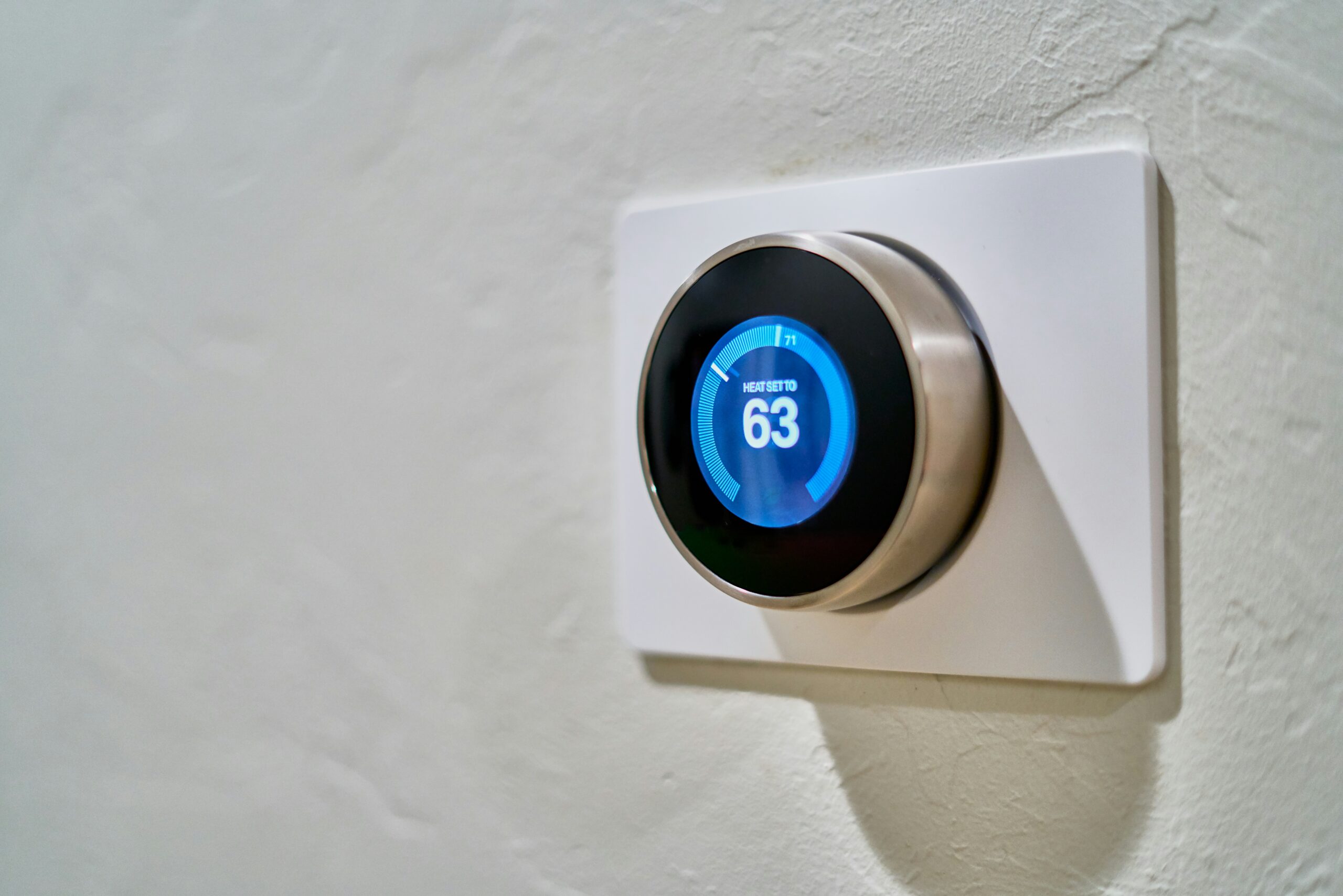Introduction to Minimalist Web Design
Minimalist web design is an approach that emphasizes simplicity by using only the essential elements necessary to convey the intended message or function. Characterized by clean lines, ample white space, and a careful selection of typography and color, minimalist designs aim to create a seamless and uncluttered user experience. In an age where users are often bombarded with overwhelming amounts of information, a minimalist website can be a refreshing departure, helping users to focus on what truly matters.
Simplicity in design is not merely an aesthetic choice; it plays a pivotal role in enhancing usability. By eliminating unnecessary elements, designers can create more intuitive and efficient user interfaces. Users are more likely to engage with a website that is easy to navigate and understand. Minimalist designs contribute to faster loading times, which can significantly improve the overall user experience and ultimately influence user retention and conversion rates.
Throughout this guide, we will explore the various principles and techniques involved in creating a minimalist website that maximizes user engagement. In the following sections, you will learn about the fundamental aspects of minimalist design, including layout, typography, and color schemes. We will delve into practical strategies for maintaining simplicity while ensuring the site remains functional and engaging. Additionally, we will discuss how to incorporate interactive elements mindfully to keep users interested without overwhelming them.
By the end of this guide, you will have a comprehensive understanding of how to design a minimalist website that not only looks visually appealing but also delivers an exceptional user experience. Whether you are a seasoned web designer or a newcomer to the field, the insights and practical tips provided here will help you create a website that stands out through its simplicity and effectiveness.
Setting Clear Goals and Understanding Your Audience
Defining clear objectives for your website is the foundation of effective minimalist design. The primary purpose should guide every design decision, ensuring that each element supports your website’s core goals. Whether it’s generating leads, providing information, or selling products, a laser-focused mission statement can prevent unnecessary components that detract from the user experience.
Understanding your target audience is equally crucial. Knowing who your users are, what they want, and how they behave online allows you to tailor the minimalistic design to their needs. This understanding can be achieved through various methods of audience research, such as surveys, analytics, and user interviews.
Surveys are an excellent starting point for gathering quantitative data. They allow you to reach a large number of users and obtain their opinions and preferences directly. Questions should be designed to uncover key insights into user behaviors, preferences, and pain points. A well-constructed survey can provide actionable data to inform design choices.
Analytics tools, such as Google Analytics, offer valuable insights into how users interact with your site. By analyzing metrics like bounce rates, session durations, and conversion paths, you can identify which aspects of your website are working and where there is room for improvement. These quantitative data points are instrumental in streamlining the design to enhance user engagement.
User interviews provide qualitative insights that are often missed by surveys and analytics. Speaking directly to users gives a profound understanding of their needs, motivations, and frustrations. This method allows for deeper engagement and reveals nuances that numbers alone can’t show. Through open-ended questions, you can discover the emotional and contextual factors that influence user behavior.
This comprehensive understanding of your audience helps in designing a minimalist website that is not only aesthetically pleasing but also highly functional. Minimalism in design doesn’t mean less functionality; it means a more focused, efficient, and clear way to engage users. By aligning your goals with the needs and preferences of your audience, you create a user-centric design that effectively serves its purpose.
Choosing the Right Color Palette and Typography
When designing a minimalist website, selecting the right color palette and typography is essential to creating a visual aesthetic that fosters maximum user engagement. A limited color scheme not only aligns with minimalist design principles but also aids in maintaining a clean, uncluttered look. A well-chosen palette should typically consist of three to five colors, including a primary color, a secondary color, and a few neutrals to balance the overall design. The focus should be on creating a harmonious color scheme that enhances the user experience without causing visual strain. Tools such as Adobe Color can assist in generating complementary color palettes that align with minimalist aesthetics.
Typography is another critical element in minimalist design. Opt for simple, readable fonts that offer clear distinction between different types of information. Sans-serif fonts like Helvetica, Arial, and Roboto are popular choices for minimalist websites due to their clean lines and legibility. Pairing two fonts—one for headings and one for body text—can create visual hierarchy without overcomplicating the design. Strive for consistency in font usage across the site to maintain a cohesive look and feel.
Contrast is crucial in minimalist design, both for visual clarity and accessibility. High contrast between text and background can significantly enhance readability and user satisfaction. For instance, dark text on a light background or vice versa ensures that the content is easily distinguishable. Moreover, consider the Web Content Accessibility Guidelines (WCAG) to ensure that your color choices meet accessibility standards. This includes providing sufficient contrast ratios and avoiding color combinations that are difficult for users with visual impairments to perceive.
In essence, the right combination of color palette and typography can create a minimalist website that is not only aesthetically pleasing but also engaging and accessible. By adhering to these principles, designers can craft user experiences that are both visually appealing and functionally effective.
Implementing Clean and Functional Layouts
A fundamental aspect of minimalist website design is the implementation of a clean and functional layout. A well-structured layout is crucial as it significantly enhances user experience by ensuring that content is easily accessible and visually appealing. This can be achieved through the strategic use of grid systems, whitespace, and clearly defined sections.
Grid systems provide a framework that ensures consistency and alignment across the site. By organizing elements within a grid, designers can create a balanced and orderly look that guides the user’s eye naturally through the content. This method not only adds to the aesthetic appeal but also improves the usability of the website. When users can effortlessly flow from one section to another, engagement levels increase.
Whitespace, also known as negative space, is another critical component in minimalist design. It refers to the empty spaces around elements on a page and should be used deliberately to avoid clutter. By giving content room to breathe, whitespace helps in emphasizing important elements, making the website look less overwhelming. It creates a sense of simplicity and elegance, which can keep users engaged and encourage them to explore further.
Defining sections clearly is also pivotal in a minimalist layout. Dividing content into palatable chunks with distinct sections allows users to navigate effortlessly. Headings, subheadings, and visual separators can be utilized to achieve this clarity. Ensuring that each section serves a specific purpose and is not overloaded with information can aid in maintaining the user’s focus and interest.
Best practices for structuring content include using concise and precise language, incorporating bullet points for readability, and maintaining consistent font sizes and styles. These practices not only make the content more approachable but also enhance the overall user experience by creating a seamless reading journey.
Optimizing Navigation for User Engagement
Designing intuitive and straightforward navigation is pivotal in enhancing user engagement on a minimalist website. A clean, functional navigation system not only streamlines user experience but also keeps visitors on the site for longer periods, reducing bounce rates and improving overall satisfaction.
There are several navigation styles well-suited for minimalist designs. Fixed menus, for instance, provide consistent access to navigation options without overwhelming the user’s senses. By keeping the menu visible at all times, users can easily explore different sections of the website without having to scroll back to the top, fostering a seamless journey.
Breadcrumb trails are another effective tool, especially for websites with deeper hierarchies. They offer users a clear path of where they are within the website structure, making it easier to navigate back to previously visited pages. Breadcrumb trails significantly reduce the effort required to backtrack, thereby enhancing user satisfaction and encouraging continued exploration.
A clear and concise menu structure is crucial in minimalist web design. It is essential to prioritize content, ensuring that the most important elements are easily accessible. Reducing the number of menu items to the most critical sections helps avoid clutter. Use descriptive, albeit succinct, labels that communicate content effectively without overwhelming the user.
In practice, this entails a thorough analysis of user goals and the website’s core purpose. Aligning navigation elements accordingly ensures that each click delivers meaningful results, driving higher engagement levels. Organize related content into logical groups and employ drop-down menus judiciously to prevent overcrowding. When content prioritization is done effectively, users are more likely to engage with the website’s offerings and achieve their objectives efficiently.
In summary, optimizing navigation in a minimalist website involves a balance between simplicity and functionality. By adopting styles like fixed menus and breadcrumb trails and maintaining a clear menu structure, designers can significantly elevate user engagement, providing a more enjoyable and accessible user experience.
Using Visual Elements Wisely
When designing a minimalist website, the judicious use of visual elements is paramount. Images, icons, and graphics are vital components that can augment user engagement, but their integration must be meticulous to maintain a clutter-free aesthetic. The principle of minimalism dictates that visuals should be used sparingly and purposefully, ensuring each element has a definitive role in enhancing the user experience.
High-quality imagery can captivate and retain user attention, but the selection process must be discerning. Opt for crisp, high-resolution photos that align seamlessly with your content and brand identity. A single, well-chosen image can speak volumes more than a gallery of irrelevant photos. Additionally, the use of negative space around images can further accentuate the minimalist appeal, directing focus and improving readability.
Incorporating icons and graphics, particularly scalable vector graphics (SVGs), presents another opportunity to elevate the visual design without compromising on simplicity. SVGs are highly favored due to their scalability, ensuring they render sharply across all devices and screen sizes without losing quality. This adaptability makes SVGs an ideal choice for minimalist websites, where maintaining visual clarity and performance across different platforms is crucial.
However, it is imperative to resist the temptation of overusing visual elements. The essence of minimalism is to foster a clean and intuitive interface, which excessive visuals can disrupt. Each image, icon, or graphic must justify its presence by contributing meaningfully to the content or user interaction. Think of visuals as complementary tools to your narrative rather than distractions.
By integrating visual elements wisely, you create a minimalist website that not only captivates the eye but also enhances user engagement. The strategic use of high-quality imagery and versatile SVGs can significantly uplift your website’s aesthetic and functional value, ensuring an experience that is both visually appealing and user-centric.
Enhancing User Experience with Interactive Elements
Integrating interactive elements into a minimalist website design can significantly boost user engagement while maintaining simplicity. This delicate balance ensures that the website’s aesthetics remain clean and uncluttered, which is essential for a minimalist approach.
One of the most effective techniques is the use of microinteractions. These are small, subtle animations or responses triggered by a user’s action, such as a button changing color when clicked or a form field highlighting upon selection. Microinteractions provide immediate feedback to the user, making the interface feel responsive and dynamic, without overwhelming the overall design.
Hover effects are another powerful tool in the minimalist designer’s toolkit. When users hover over certain elements—such as links, buttons, or images—slight changes in appearance can guide their attention subtly and effectively. Examples include text color change, slight enlargement, or a soft drop shadow. These effects are minimal yet impactful, offering users a clue about interactivity without requiring explicit instructions.
Animations, when used sparingly, can also enhance user engagement. Simple animations, such as a fade-in effect on new content or smooth transitions between sections, can make navigation feel more fluid and enjoyable. For example, an animated progress bar can inform users about the loading status of content, reducing perceived wait times and improving the overall user experience.
The incorporation of these interactive elements should always be done with an emphasis on maintaining the minimalist aesthetic. The goal is to enhance the functionality and user engagement of the website without adding unnecessary complexity. Striking this balance can make a website not only visually appealing but also highly intuitive and enjoyable for users.
By thoughtfully integrating microinteractions, hover effects, and animations, you can create a minimalist website that is both engaging and easy to navigate, ensuring that users remain connected and satisfied during their visit.
Testing and Iterating Your Design
Testing your design to ensure it meets user expectations and supports engagement is a critical step in creating a minimalist website that maximizes user engagement. Conducting thorough tests helps identify areas of improvement that may not be immediately obvious during the design phase. Various methods can be utilized to evaluate the effectiveness of your design.
One common method is A/B testing, which involves creating two different versions of a webpage and showing each version to a separate group of users. This allows you to compare user interactions and preferences between the two versions, making it easier to determine which design elements are more effective in achieving your engagement goals.
User feedback sessions are another valuable testing approach. By directly involving users through surveys, interviews, or usability testing sessions, you gain deep insights into their preferences and experiences with your website. This qualitative data can highlight usability issues and areas for enhancement that quantitative data might not reveal.
In addition to A/B testing and user feedback sessions, performance analytics play a crucial role in testing your design. Tools such as Google Analytics can provide detailed quantitative data on user behavior, including page views, bounce rates, session duration, and conversion rates. Analyzing these metrics allows you to identify patterns and areas where users may be experiencing difficulties or disengagement.
Iterating your design based on test results is essential for continually improving user experience and engagement. This involves making data-driven decisions to refine various design elements, such as navigation, layout, and content. Incremental changes based on concrete feedback and performance data can lead to significant improvements over time.
Remember, the testing and iterating process is not a one-time task but an ongoing cycle. Regularly collecting and analyzing user data ensures that your website remains aligned with user needs and preferences, ultimately fostering a highly engaging and effective minimalist website. Through consistent and methodical testing and iteration, you can create a dynamic and user-centric digital experience.






